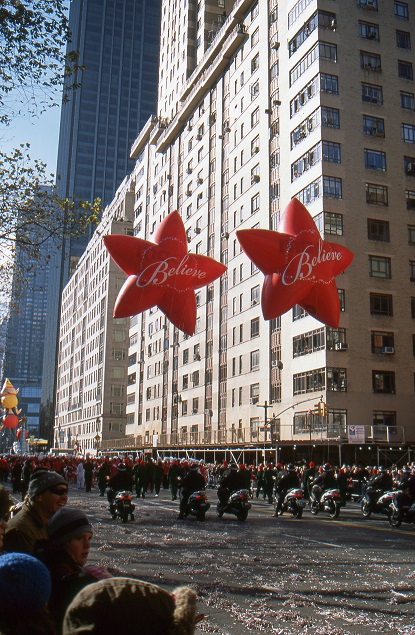History of the Macy’s Thanksgiving Day Parade
Every year on Thanksgiving morning, millions of Americans tune their television sets to the Macy’s Thanksgiving Day Parade in New York City. Featuring dozens of costumed people touting larger than life balloons of America’s most beloved characters and performances from the country’s favorite celebrities on massive, elaborately decorated mobile floats, the televised event has become an absolute staple of Thanksgiving Day tradition.

Photo Credit | Deposit Photos | @ robert1598
But it hasn’t always been as big of a production as it has come to be. It actually started out as a small Christmas parade run by Macy’s staff in 1924. Actually, Macy’s wasn’t even the first department store to stage a Thanksgiving Day parade. The first was Gimbel Brothers Department Store in Philadelphia in 1920. That procession, which undoubtedly inspired the Macy’s parade, featured a mere 50 people, 15 cars and a fireman in a Santa Claus costume.
The first Macy’s Thanksgiving Day parade was a bit of a bigger production. It featured four bands, zoo animals from the Central Park Zoo (camels, donkeys, elephants and goats), three floats pulled by horses – and, of course, Santa Claus himself, who has been appearing in the parade since its very inception.
In 1927, Macy’s employees needed to find an alternative to the zoo animals after a negative reaction from some of the children in attendance who were frightened by them. The solution was balloons, which have since come to be an iconic part of the parade.
In 1934, ten years into the parade’s history, celebrities became a signature part of the event. The first known celebrity to take part in the parade was popular actor/singer Eddie Cantor. But he wasn’t the only celebrity – that same year was the first parade featuring the now-expected Mickey Mouse balloon.
Unable to source helium and rubber, the Macy’s Thanksgiving Day Parade went on a two year hiatus when the United States entered World War II in 1942. But the parade returned in 1945 to a wider audience than it had ever witnessed – that was the first year the parade was televised. The parade has been televised ever since, cementing itself in history as a cultural pillar of American holiday tradition.